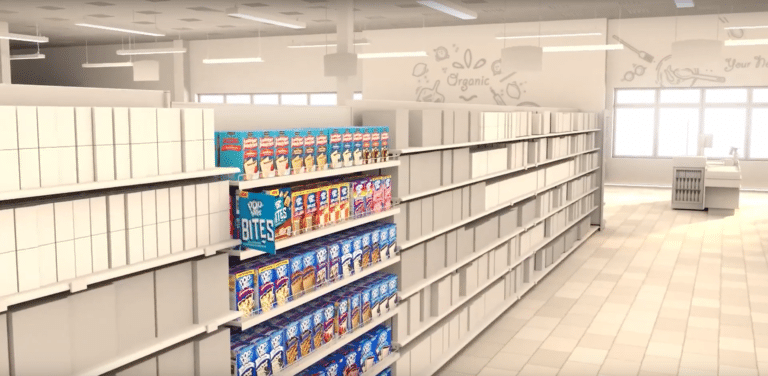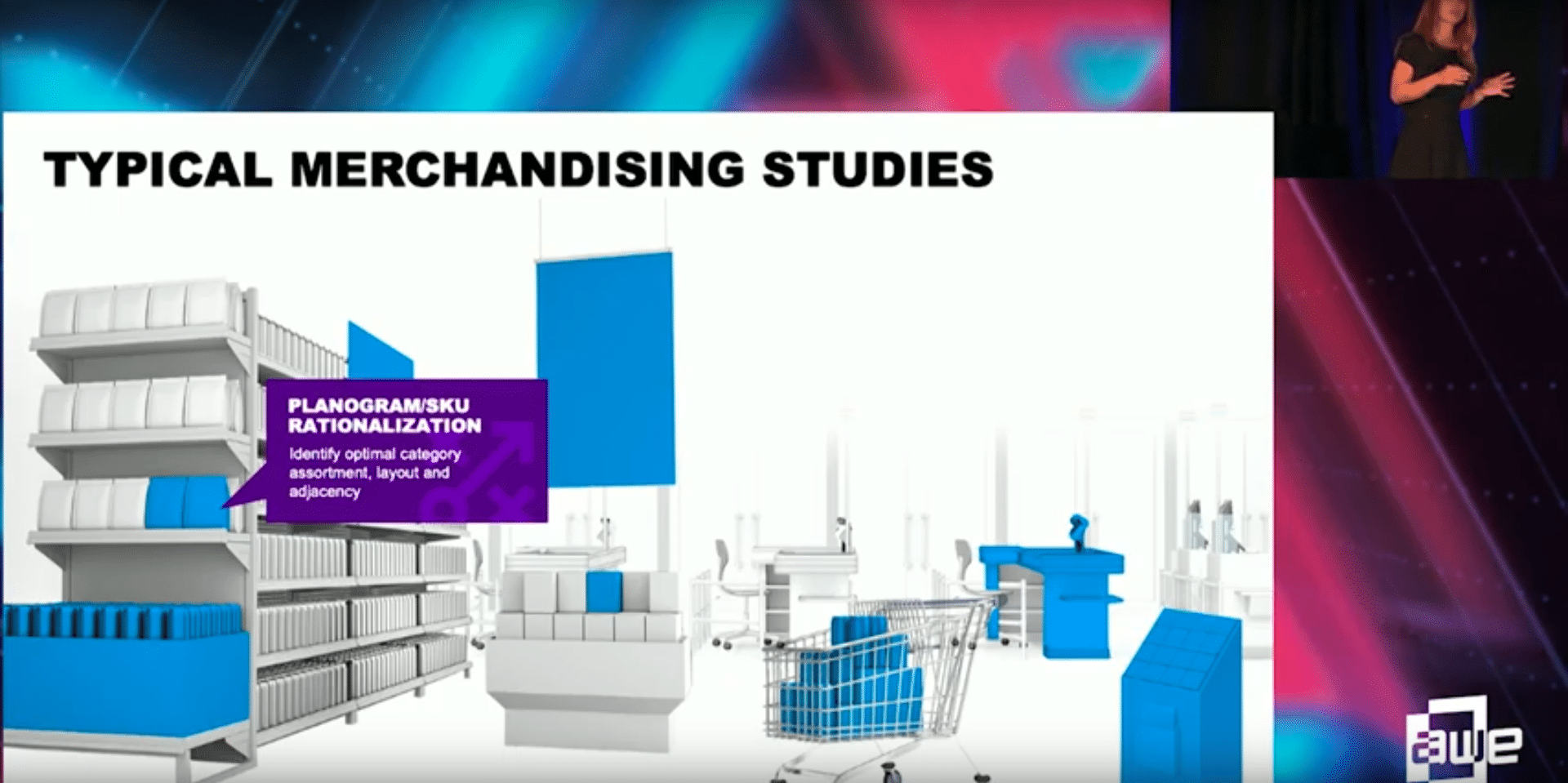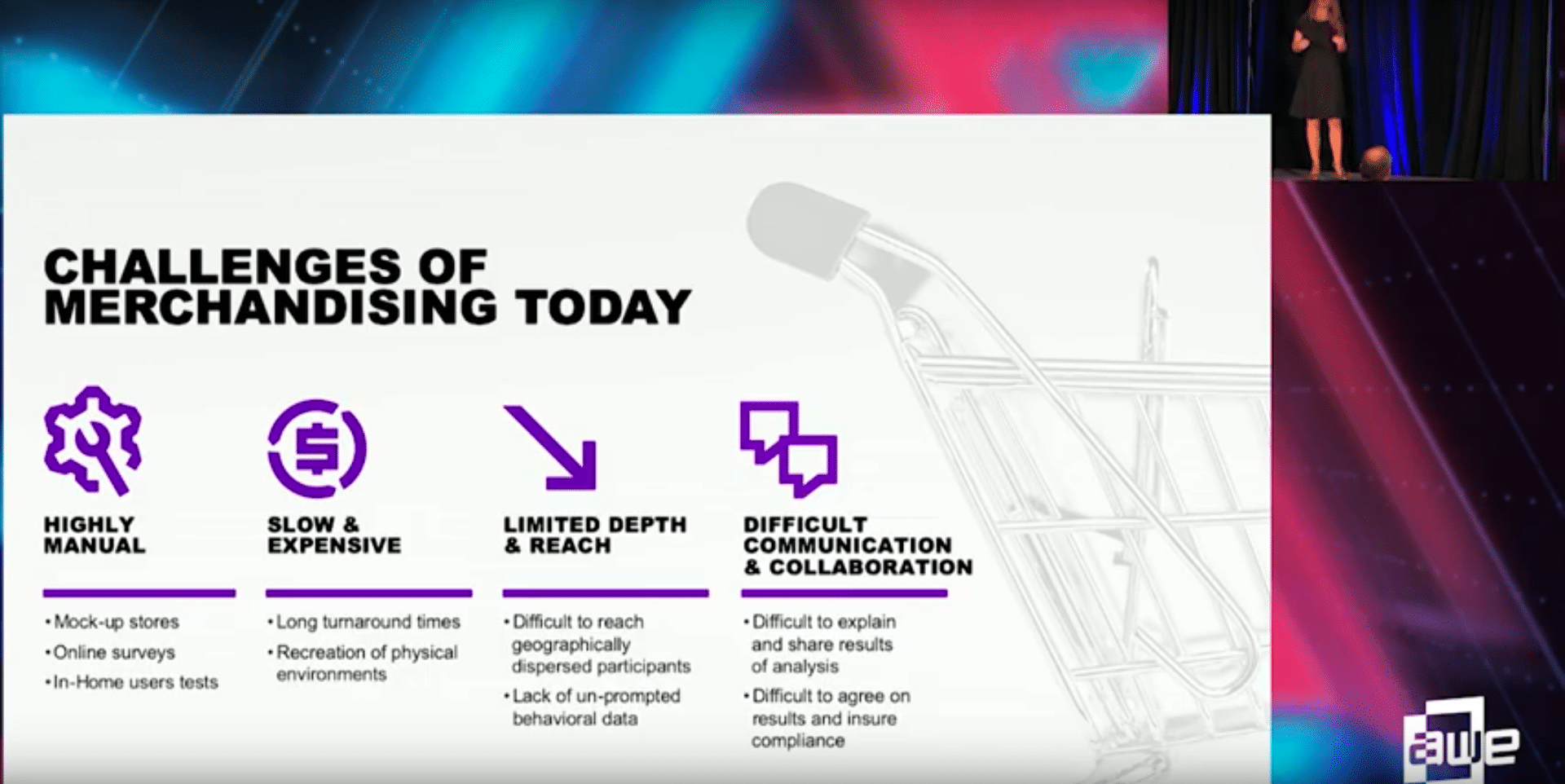
XR Talks is a series that features the best presentations and educational videos from the XR universe. It includes embedded video, as well as narrative analysis and top takeaways. Speakers’ opinions are their own. For a deeper indexed and searchable archive, subscribe to ARtillery PRO.
Most of our focus on spatial computing in retail is around AR, such as in-store shopping assistance. But VR is also having an impact, such as Macy’s VR installations. And it’s taking form in retailer-facing ways, considering large-scale initiatives like Walmart’s employee training.
It’s also being deployed to optimize store layouts and merchandising. That’s a fancy way of saying it helps retailers simulate shopping experiences in a virtual (cheaper) environment to decide what products should go where. These decisions can sway millions in revenue when at scale.
This was recently demonstrated by Accenture’s Extended Reality group and Qualcomm. Working with CPG-brand Kellogg’s on in-store merchandizing simulations, it was able to optimize product placement and boost revenue, according to Accenture’s Rafaella Camera at AWE (video below).

Stepping back, the art of merchandizing has several components — everything from packaging to pricing to shelf placement to how you lead shoppers through a store. Accenture breaks this down into eight areas, but focused this case study on planogram rationalization (product placement)
“At a very high level, merchandising is the art of maximizing sales in store by doing different things. You could change pricing. You could change packaging and positioning of a product, or the store flow […] So if we had to break down the eight major studies, one of them is new product placement. So if there is a new product, where do I put it within a category or within a shelf to make sure that I maximize sales for that product, but I don’t cannibalize the sales of other products? […] Brands and retailers perform hundreds and sometimes thousands of those tests every year.”
These tests usually include online (2D) simulations or focus groups in mock stores. The former is limiting while the latter is expensive and time consuming. That includes flying geographically-diverse shoppers to a location, observing physical behavior and changing variables on the fly.
“CPG or retail companies create stores across the world where they bring in testers to see how they act and what they do. Another way of doing it is in 2D, so online surveys [and] in-home user tests. It’s a highly manual process because every time you have to change something physically, you have to go and recreate or modify [the test]. It’s slow and expensive. For the same reason, it takes a while to modify a physical environment.”

So given these challenges, the question for Camera and team was how can the processes be streamlined and results improved with VR. So they devised a VR simulation that employed six-degrees-of-freedom and eye-tracking headsets to monitor reactions to product placement.
Specifically, test subjects were exposed to full-scale virtual store aisles in VR. They could move through the space by teleporting to shop and put products in a virtual shopping cart. Eye tracking came into the equation to see where on store shelves shoppers’ attention was attracted.
The test sought to discover behavioral data around Kellogg’s Pop Tart Bites. It found that placing that particular product on lower shelves was more effective than upper shelves. This discovery likely wouldn’t result from the above methods like online surveys or even mock shopping.
“To confirm the high degree of correlation between results of our VR tests and those from existing testing methods, eye tracking provided insights in consumer behavior that otherwise we would have missed,” said Camera in a produced video (below) that accompanied the talk.
The result? Kellogg’s put this knowledge in play and saw a lift in purchases to the tune of 18 percent above the baseline control group. And the sales lift wasn’t just for the tested product: the new placement created an optimized orientation of all Kellogg’s products on the same shelf.
As for who did what in this collaboration, Accenture developed the software and test parameters, Qualcomm provided headsets and eye-tracking, and Kellogg’s was the test partner. Cognitive3D was also involved in the process of capturing the analytics for the project.
Like Camera, Qualcomm’s Patrick Costello underscored the role of eye-tracking in the study. This achieved a level of observational nuance that’s required to truly simulate shopper sentment and monitor gaze. So these types of simulations will likely improve as eye-tracking itself does.
“Importantly, there was correlative data on user behavior. So in the experience, a user can go and actually pick up objects off the shelf with the controllers, they can put it back on the shelf or they could check out with that item and actually buy it in the experience. So you can correlate all that user behavior with the eye-tracking data which becomes really useful for key decision-makers in the process.”
In the end, this validates VR as a new flavor of consumer research, and the results speak for themselves. The takeaways of this particular test (lower shelf placement) won’t always apply to other products, but we could see it applied in native ways by various brands and categories.
“The three things that we were looking to do and get were: Could we do this type of test faster and cheaper at scale? Could we prove that there’s a high degree of correlation between the results of traditional tests and those of your merchandising? And could we get behavioral data through eye tracking that would modify our decision? The answer to all three was ‘yes’.”
See the video below for more color on the project and ROI metrics, And see more from Camera, in our past interview and panel discussion. Lastly it’s worth noting that since the AWE talk, this project won a Lumiere Award Best Use of VR for Merchandising/Retail. Congrats to all involved.
For deeper XR data and intelligence, join ARtillery PRO and subscribe to the free AR Insider Weekly newsletter.
Disclosure: AR Insider has no financial stake in the companies mentioned in this post, nor received payment for its production. Disclosure and ethics policy can be seen here.
Header image credit: Accenture, YouTube
